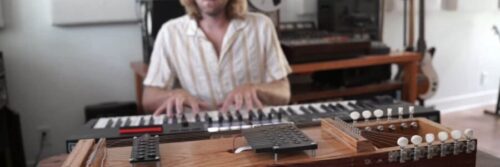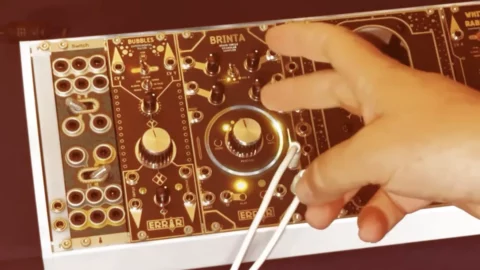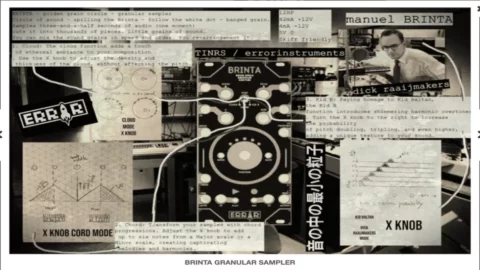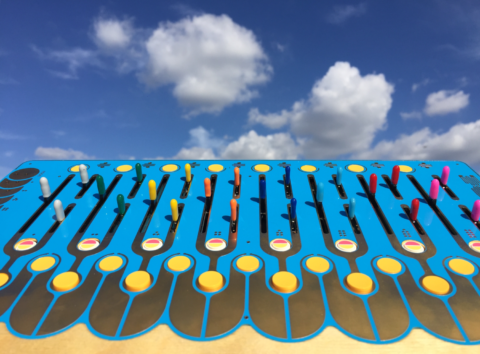String Armonica Electro-Acoustic Synthesizer (Sneak Preview)
Merkaba Electronics shared this preview of a new electro-acoustic synthesizer, String Armonica.
The String Armonica is a MIDI instrument that uses electromagnets to resonate twelve strings. Using the power of harmonic resonance, it can play up to 48 notes of full polyphony.
And, all the sounds that the instrument produces originate solely from the vibrations of the strings themselves. Nested within the body of the instrument lies a a polyphonic synthesizer, which outputs notes that resonate the strings and their octave harmonics.
How they explain it:
“The String Armonica works differently than how a guitar sustainer works. In a sustainer (Sound Stone, Ebow, etc), it will resonate a string regardless of its tuning. In order for the String Armonica to correctly work, the strings must be tuned so that they match the resonant frequency of the internal synthesizer. By adjusting the tuning pegs, you’re able to “voice” the loudness of each octave and can make certain octaves louder than others or of equal volume.
When you listen through headphones, the stereophonic output becomes evident as one set of strings is panned to the left and another to the right, creating a rich, immersive experience. However, a monophonic option is available as well.
The name of the instrument, The String Armonica, pays homage to the rare Glass Armonica, an exquisite crystal glass instrument invented by Benjamin Franklin. The resemblance in the sound produced by our instrument to that of a Glass Armonica is very similar which is why we thought of this name.
In our improvisation demonstration, we explore the instrument’s potential by adjusting the volume with an expression pedal and using the mod wheel of the MIDI controller to generate a staccato tremolo effect.
It’s important to note that this is a prototype. In its current state, it may appear a bit rough around the edges due to several adjustments and changes we’ve made along the way. The final manufactured version will be significantly more refined and less crude.”
Details on pricing and availability are still to be determined. Merkaba Electronics has a form on their website to sign up to get more information and to be notified when the instrument is available to pre-order.





